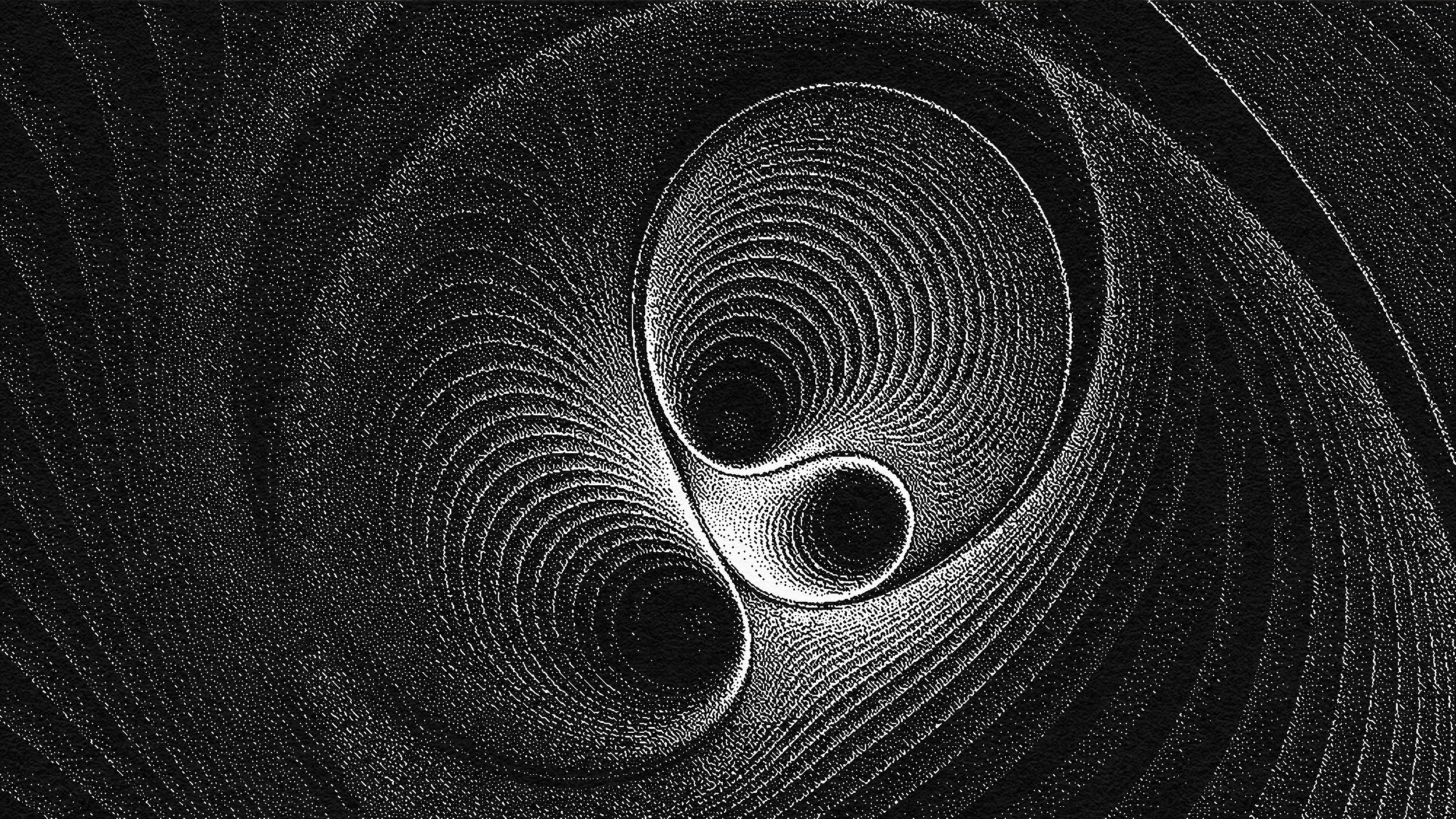This One Experiment Reveals More About Reality Than Any Quantum Interpretation Ever Will
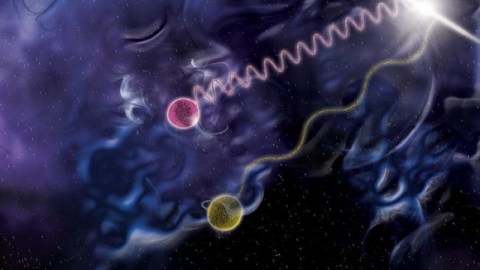
It doesn’t matter what’s popular, logical, or intuitive. What matters is what you can observe and measure.
Imagine asking the biggest, most fundamental question of all: what is reality? How would you go about answering it? If you took the scientific approach, you’d go down to the smallest indivisible quantum of matter or energy possible, isolate it as much as possible, and then measure its behavior under every bizarre scenario your mind can concoct. The experimental results should provide a window into reality unlike any other, as it compels the laws of physics to reveal themselves.
As bizarre, confusing, and controversial as quantum physics can be, this is the approach taken by the experimental physicists who study the quantum rules behind our Universe. Despite all the attention the different interpretations draw, they don’t reveal the nature of our quantum reality nearly as well as a single experiment — the double-slit experiment — can. Here’s what all the fuss is about.
Imagine, before you ever start thinking about particles, that you had a continuous fluid at your disposal in a large tank: something like a pool full of water. At one end, you start generating waves that propagate down the length of the tank, evenly spaced with regular peaks and troughs. In the middle of the pool, however, is an obstacle: a barrier that blocks the waves from propagating any further. The only exception is that there are two holes, or vertical slits, cut into the barrier to allow a tiny fraction of that water through.
What will happen to those water waves? They behave exactly as you’d predict from classical mechanics and the wave equation: two wave sources make it through, one at the site of each slit. As the peaks and troughs reach each other from the two sources, they interfere both constructively and destructively. As a result, at the far end of the tank, you’ll get an interference pattern from those two wave sources.
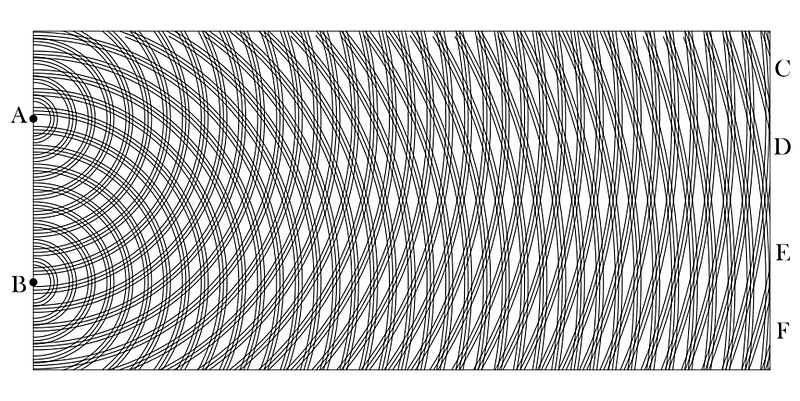
On the other hand, what if you didn’t have a continuous fluid, but a slew of discrete particles instead? You’d do the same experiment, except instead of filling your large tank with water, you’d leave it empty. You’ll leave the barrier with two vertical slits in place, but this time you’ll throw a large number of pebbles down towards the far end of the tank.
Overwhelmingly, the majority of the pebbles will strike the barrier and fail to go through; they won’t arrive at the far end of the tank. Only a few pebbles will arrive, and they’ll be clustered in two regions: one for the pebbles that slipped through the slit on the left and another for the pebbles that slipped through the slit on the right. A few pebbles might strike the edge of the slit or another pebble, and hence you won’t get all the pebbles arriving at the same two locations, but rather they’ll be distributed in two straightforward bell curves.
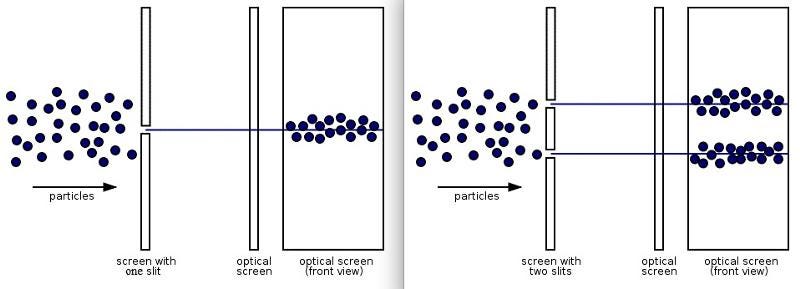
These are the two classical outcomes you’d expect for a two-slit experiment: one set of results for where you have waves, and a disparate set of results for where you have particles. Now, let’s imagine the same experiment, but instead of macroscopic objects like water waves or large numbers of pebbles, we’re going to use the fundamental quantum entities provided to us by the Universe.
The first time any human ever did such an experiment, unbelievably, was right at the turn of the 18th century. (Really! The hints of quantum physics are really hundreds of years old!) In the late 1790s and early 1800s, a scientist named Thomas Young was experimenting with light, when he had the brilliant idea to do two things simultaneously:
- to perform an analogous experiment with a source, a barrier with two slits in it, and a screen,
- and to use light that was monochromatic, or all of the same wavelength.
The results were immediately astonishing.
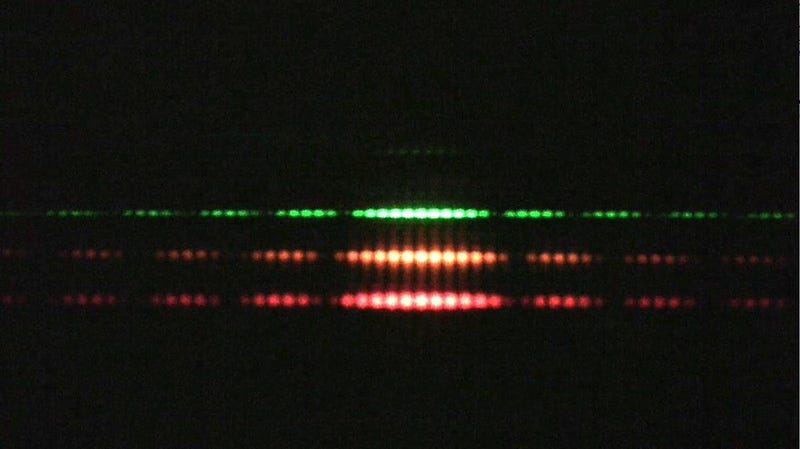
You see, since the 1600s, scientists had followed physics as Newton had laid it out, and Newton insisted that light was not a wave, but was a corpuscle: a particle-like entity that moved in straight, ray-like lines. His treatise on the subject. Opticks, correctly described a large number of phenomena like reflection and refraction, absorption and transmission, how white light was composed of colors and how light rays bent when they transitioned from traveling through one medium (like air) to another medium (like water).
Newton’s contemporary, Christiaan Huygens, concocted a wave theory of light, but it couldn’t account for Newton’s experiments with prisms. The idea that light could be a wave fell out of favor more than 100 years earlier, but Young’s double slit experiments brought them back. Unambiguously, light passed through a double slit exhibited wave-like, not particle-like, properties.
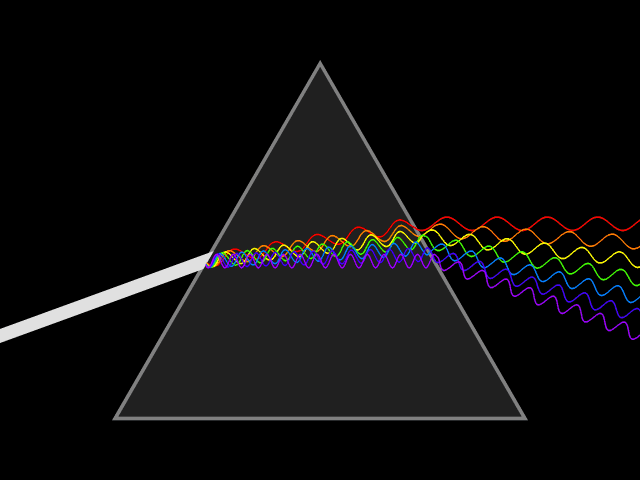
Subsequent experiments with light confirmed its wave-like properties, and Maxwell’s formulation of electromagnetism allowed us to finally derive that light was an electromagnetic wave that propagated at c, the speed of light in a vacuum. But what’s going on with light at a fundamental level?
Here are three of the most thoroughly considered options:
- Light was a continuous waveform, not quantized into discrete entities carrying fixed amounts of energy.
- Light is quantized and discrete, and the energy of each quantum is determined by the light’s intensity.
- Light is quantized and discrete, and the energy of each quantum is determined by the light’s wavelength.
In the early 1900s, experiments began to discriminated between these options. Einstein’s work on the photoelectric effect was decisive, as it demonstrated that only light of a short-enough (i.e., blue enough and energetic enough) wavelength was capable of knocking loosely-held electrons off of a metal.

Since electrons were particles, photons had to behave as particles, too. But that double slit experiment sure made it seem like these photons were behaving as waves. Somehow, both of these properties of light — that it behaved as a wave when it passed through a double slit but that it behaved as a particle when it struck an electron — must simultaneously be true and mutually compatible.
When most people first learn about this, their minds immediately run in a bunch of different directions, trying to make sense of this bizarre and unintuitive aspect of reality. From a physicist’s perspective, this translates into imagining what sorts of experiments (or modifications to this one double-slit experiment) one could do to probe reality deeper. The first thing you might think of is to switch out photons, which act as both waves and particles, for something that’s known to behave as a particle: an electron.
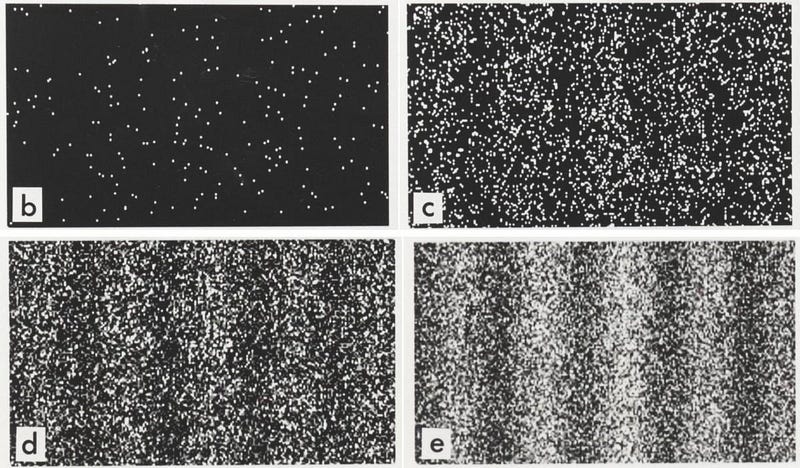
So you fire a beam of electrons at a barrier with two slits in it, and look at where the electrons arrive on the screen behind it. Although you might have expected the same result you got for the pebble-experiment earlier, you don’t get it. Instead, the electrons distinctly and unambiguously leave an interference pattern on the screen. Somehow, the electrons are acting like waves.
What’s going on? Are these electrons interfering with each other? To find out, we can change the experiment again; instead of firing a beam of electrons, we can send one electron through at a time. And then another. And then another. And then another, until we’ve sent thousands or even millions of electrons through. When we finally look at the screen, what do we see? The same interference pattern. Not only are the electrons acting like waves, but each individual electron behaves as a wave, and somehow manages to create an interference pattern only by interacting with itself.
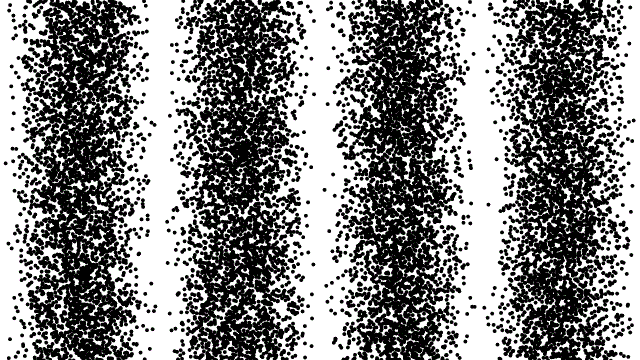
If this bothers you, you’re not alone. Upon observing this phenomenon, physicists repeated it with photons, sending them one-at-a-time through the double slit. The result? Same as it was for electrons: the photons interfere with themselves as they travel through the experiment.
So what else can we do to learn more? We can set up a “gate” at each of the two slits, and ask which one the electron (or photon) actually goes through. The way you do this is to cause an interaction (through a photon interaction or by measuring an electromagnetic effect of a charged particle passing through the slit) if the particle you’re firing passes through your slit.
You do the experiment. Electron #1 goes through the right slit. So does electron #2. Then electron #3 goes through the left slit. #4 goes right, #5 and #6 go left, etc. After thousands of electrons, you record them all. And your screen, instead of showing an interference pattern, shows two non-interfering piles.
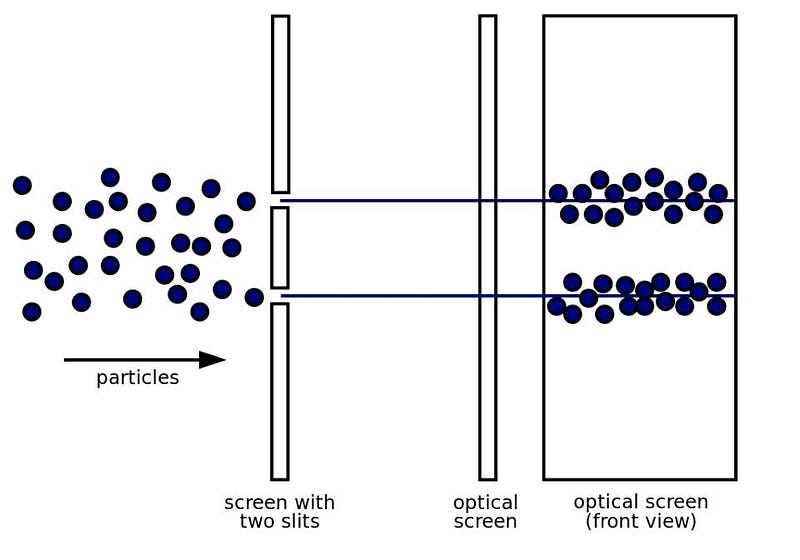
It’s as though the act of observing — or forcing an energy-exchanging interaction — destroys the wave-like behavior and forces particle-like behavior instead. You can then apply all sorts of tweaks, and see what happens. For example:
- You can try lowering the interaction energy of the quanta that exist at the gate, and find that as long as you can stay above a threshold where an interaction makes an observable effect, there’s no interference pattern on the screen.
- You can lower the intensity of the photons that detect the passing electrons, and find that the “two pile” pattern slowly disappears and is replaced by the interference pattern, while the reverse happens if you dial up the intensity.
- You can try destroying the information you collect when passing a particle through the gate before you look at the screen, and find that if you destroy the information sufficiently, you’ll see the interference pattern instead of the “two pile” pattern.
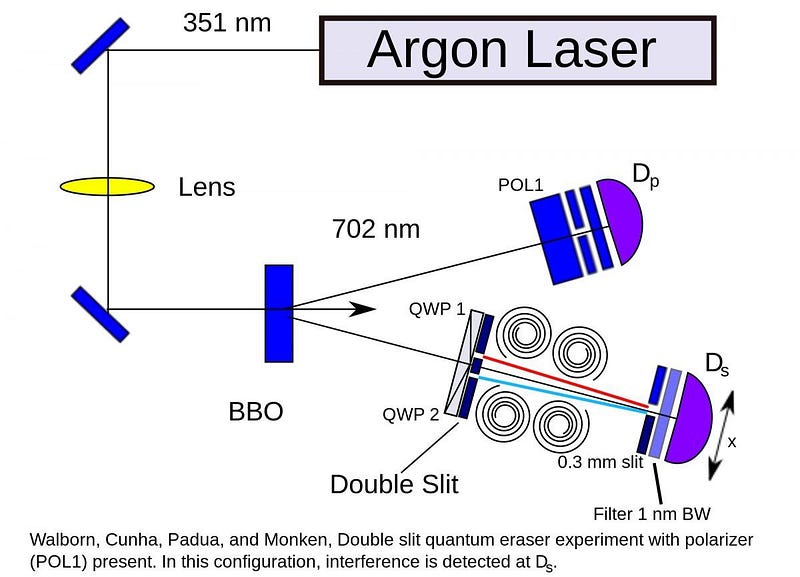
This is fascinating stuff, and is really just the tip of the iceberg for quantum physics. If you set up your apparatus in a particular configuration, you can measure the outcome of any such experiment you perform. What happens if you force the interaction between a photon and the electron as it passes through the slit, but never record the information? What happens if you don’t look at the information you do record, but look at the screen before you ever look at the information? If you then go and destroy the information and look at the screen again, does anything change?
Each experimental setup will give you a unique set of results, and each result you get provides you with a little piece of information about the quantum picture of our Universe. If you want to know what reality is, it’s this: what we can observe, measure, and predict about nature under every combination we can dream of setting up. To learn more, we have to look to experiments and observations. Those results, rather than which quantum interpretation you accept, show us what’s truly real.
Ethan Siegel is the author of Beyond the Galaxy and Treknology. You can pre-order his third book, currently in development: the Encyclopaedia Cosmologica.



